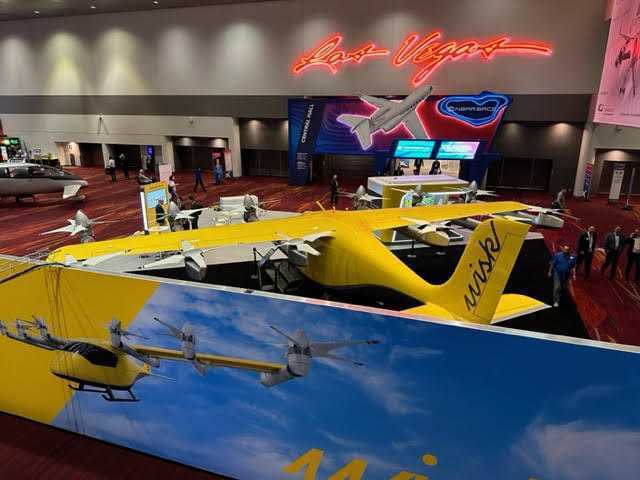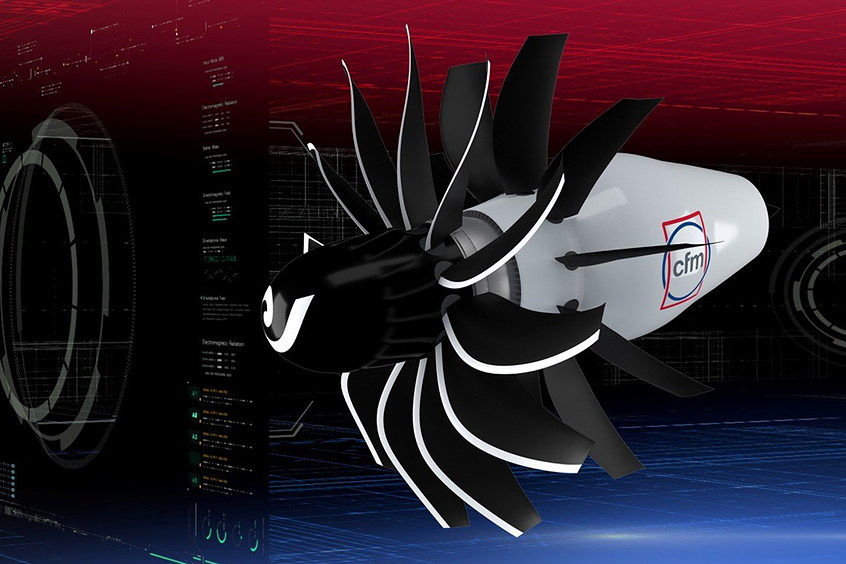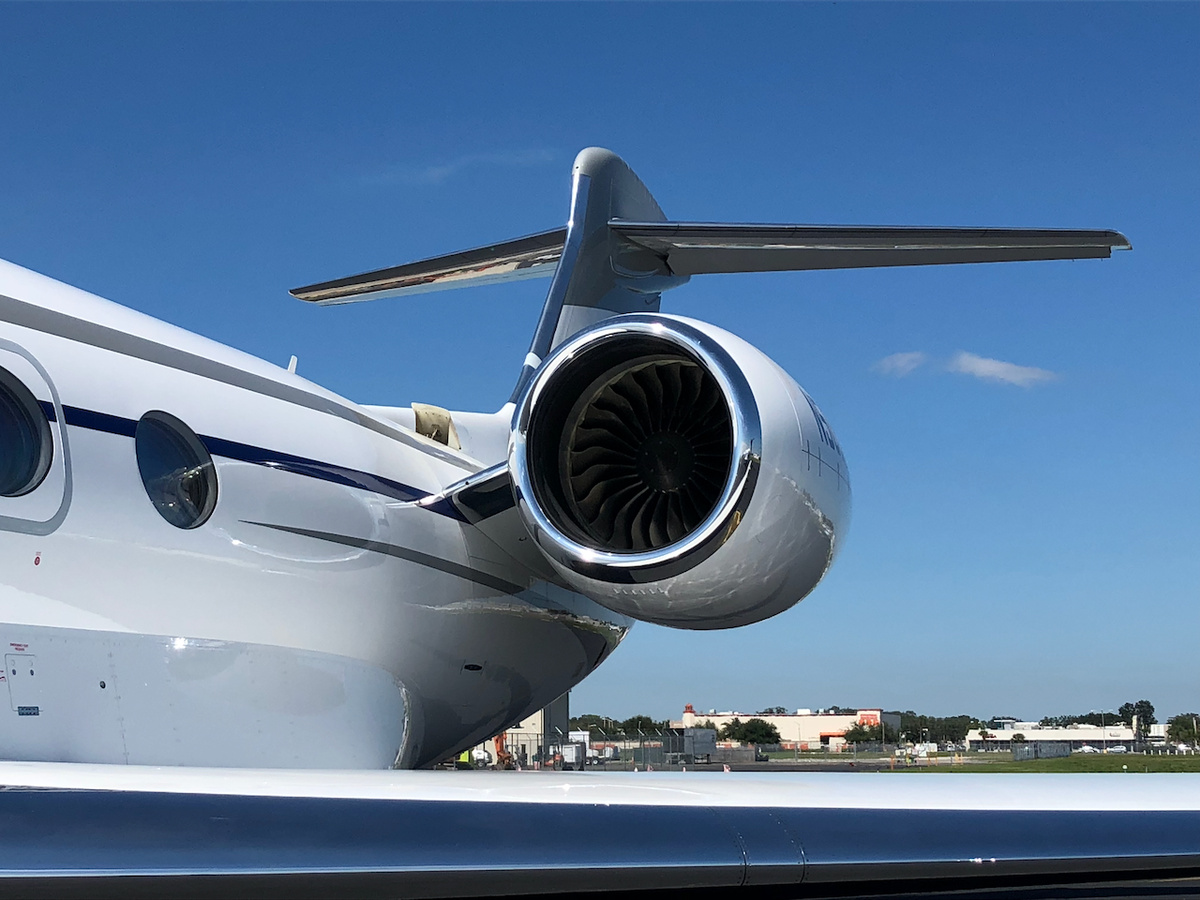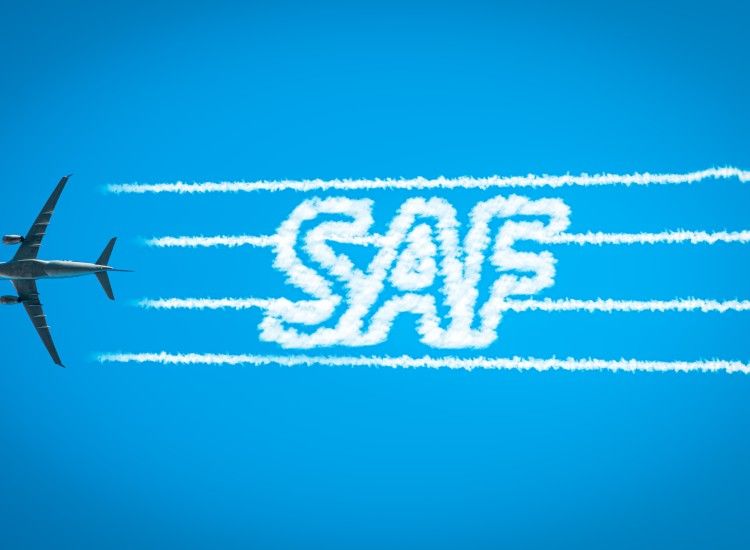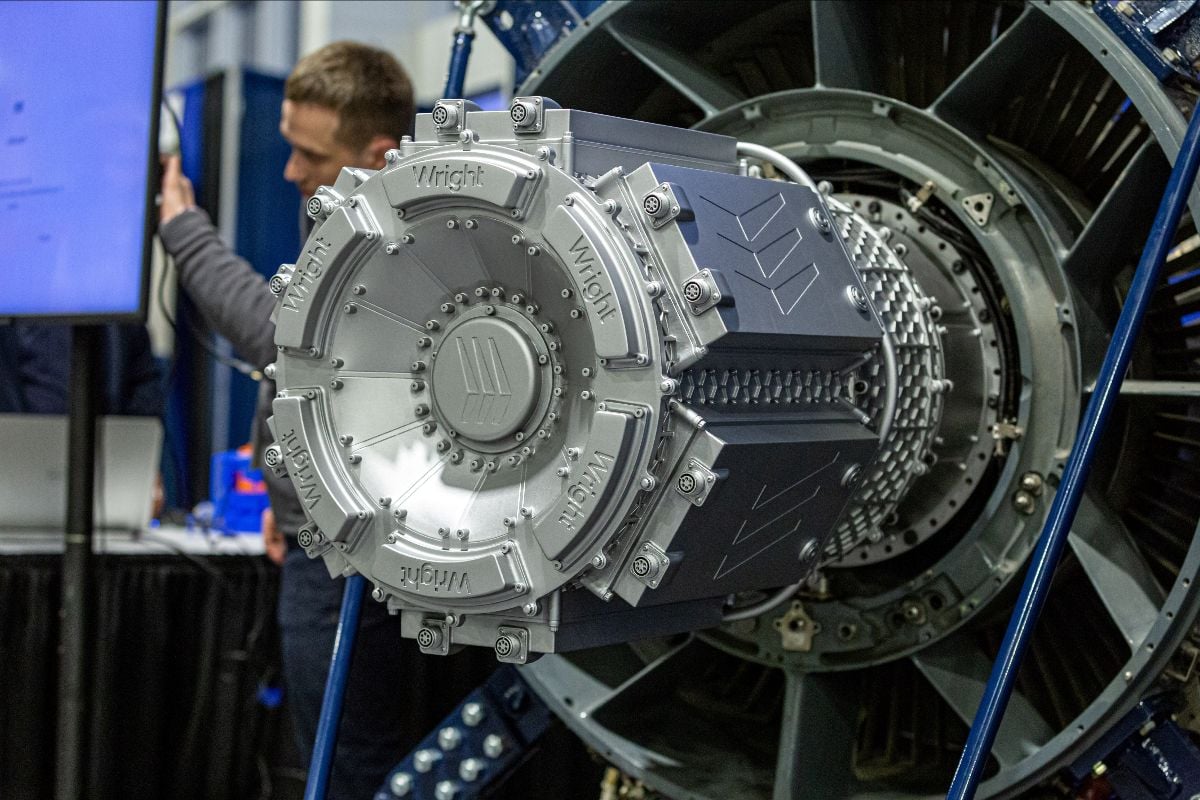The path to zero emission aviation was a major focus of the recent NBAA-BACE Convention, where aviation leaders and visionaries gathered to explore “Where the Future Takes Flight.” Highlights from the show included:
“Climbing. Fast.” A dozen leaders from across the industry gathered to launch a new initiative called “Climbing. Fast.,” affirming the entire sector’s commitment to net-zero emissions by 2050. NBAA President and CEO Ed Bolen said, “At NBAA-BACE we made clear: business aviation is on a mission to net zero – and we are Climbing. Fast.”
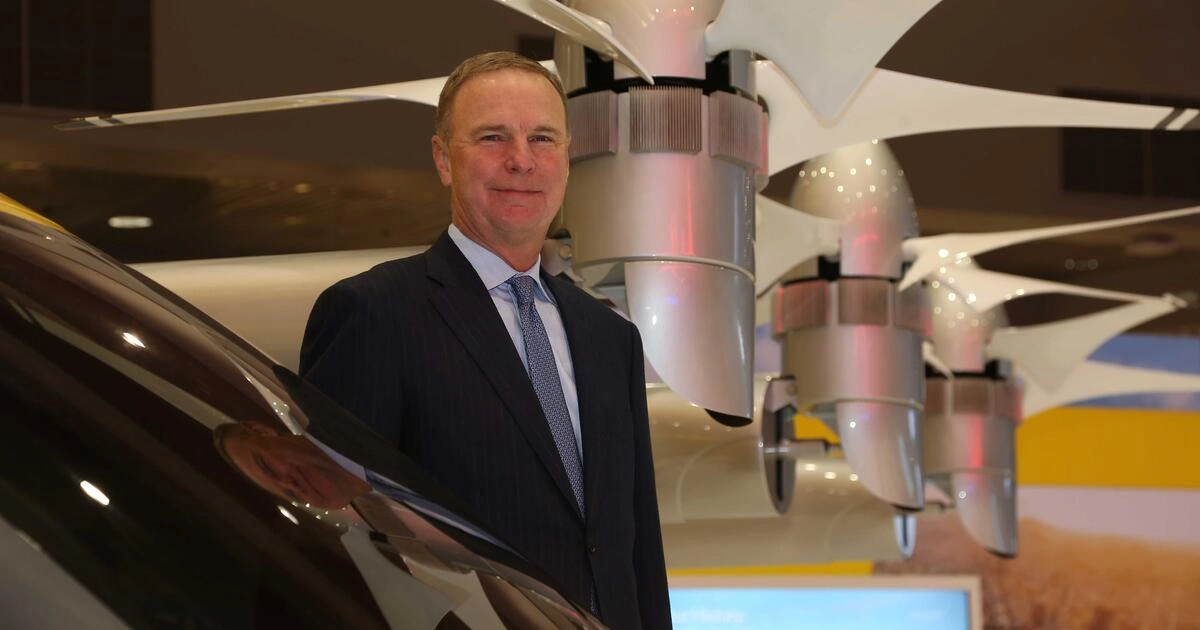 Ed Bolen, NBAA President and CEO. Photo by Mariano Rosales, Aviation International News
Ed Bolen, NBAA President and CEO. Photo by Mariano Rosales, Aviation International News
The “Climbing. Fast.” initiative will highlight the pioneering work to make the industry’s net-zero carbon emissions goal a reality, including through the development of eco-friendly aircraft that use ultra-efficient engines, including hybrid, electric and even hydrogen-powered propulsion; the production of sustainable aviation fuels (SAF), which can reduce net-carbon emissions by 80%; and, the use of smarter, faster, more efficient routing that requires less energy.
The unified industry campaign already counts 10 stakeholder organizations in its ranks, whose leaders stated their enthusiastic support for the new initiative.
Newsmakers Panel: Hybrid electric aircraft coming soon. Industry visionaries leading the development of hybrid and electric aircraft propulsion joined the FAA’s head of aviation safety for a panel on opening day. Topics included fuel systems, regulation and markets.
Notable quotes: Huge growth opportunity: “While urban air mobility is certainly one application for electric aircraft, there’s a much bigger market in regional air mobility or longer-range flights of up to a few hundred miles,” said Marc Ausman, chief product officer at Electra, a company developing a hybrid-electric short takeoff and landing aircraft.
 Marc Ausman (L), chief product officer at Electra and Scott Burgess (R), President, Eco-Aviation Foundation.
Marc Ausman (L), chief product officer at Electra and Scott Burgess (R), President, Eco-Aviation Foundation.
Due to the lower operating costs associated with electric flight, “when you’re looking at starting new business opportunities, the economics pencil out a lot quicker, and so you can take that risk now,” he said. “There’s a huge growth opportunity here. We can open entire segments and expose people to aviation in a way that just wasn’t possible before.”
 Electra Aero scale model.
Electra Aero scale model.
Pilot shortage: Kriya Shortt, president and CEO of Textron e-Aviation, said battery electric powertrains are also ideal for pilot training. According to Shortt, eAviations’ Pipistrel Velis Electro electric trainer can reduce operating costs by about 75%. This lowers the cost barrier that many aspiring pilots face when entering the profession which could in turn alleviate the pilot shortage.
Two fuel sources? Jean Botti, CEO and CTO of France-based VoltAero, made a strong case for having two fuel sources. “It’s probably better to be able to use two fuels to start with – what you have today, plus electric, this is already a step. Second, in order to make sure you have safety, two sources of energy [batteries and electric generators] are always better than one and much better for noise reasons,” said Botti, whose company is currently developing the Cassio family of electric-hybrid powered aircraft.
Keeping pace with designs: Panelist David Boulter, FAA associate administrator for aviation safety, acknowledged that keeping up with all the various AAM propulsion designs presents “real challenges for a regulator to take on all at once.” To meet these challenges, he said AAM certification has been reorganized. “We’re working across the agency to break down stovepipes.
“You’ll see a big push from us next year to really be out engaged with the applicants, so that we can learn more, and we can make sure that we understand it. and a lot of these technologies will go across products.”
“We are fully engaged in making sure that we don’t stand in the way of innovation because a lot of these innovations are lifesaving,” said Boulter. “They will make it safer.”
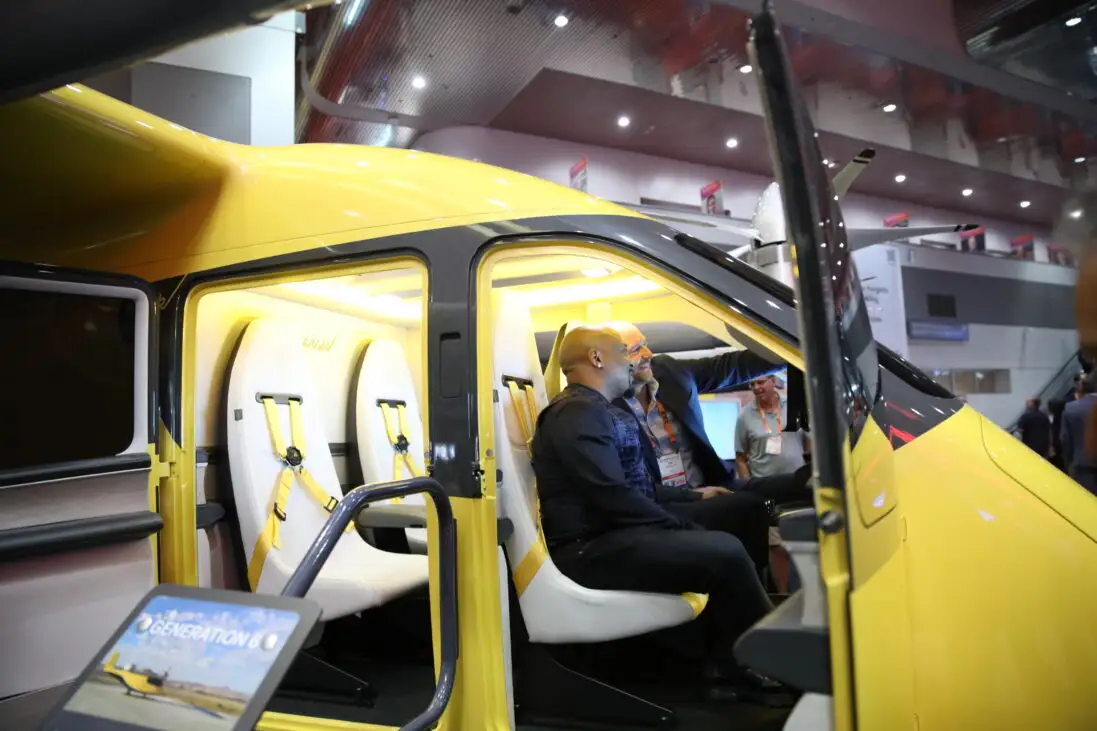 Daymond John, “Shark Tank” personality, tours the Wisk generation 6. Photo by NBAA
Daymond John, “Shark Tank” personality, tours the Wisk generation 6. Photo by NBAA
Wisk, a Boeing subsidiary, is undergoing certification testing of its sixth generation AAM vehicle. “That’s the technical side, but we’re also super-focused on airspace integration [and] community engagement,” said Dan Dalton, Wisk’s vice president of global partnerships.
“How do we ensure that the airspace is ready to receive some of these autonomous aircraft?” he asked during an education session at the 2023 NBAA business Aviation Convention & Exhibition (NBAA-BACE). “And how do you tie everything that’s happening at the national level to the individual end user who’s actually going to hop onto these [aircraft] and hop off with them on a daily basis?”
Volocopter GmbH has demonstrated its 2X eVTOL vehicle at many national and international events, including during NBAA-BACE. Oliver Reinhardt, chief risk and certification officer for the company, said it’s important that people witness AAM operations to dispel fears and assumptions about the technology.
“The public initially had crazy things in their minds, scenes from ‘The Fifth Element’ with flying cars everywhere around vertical highways, but we’re doing something completely different,” he said. “We asked people before we were flying, ‘What do you think about AAM?’ Generally, the percentage was positive, but a little bit careful. Then we did our flights and asked the same questions afterwards, and their responses were overwhelmingly positive.”
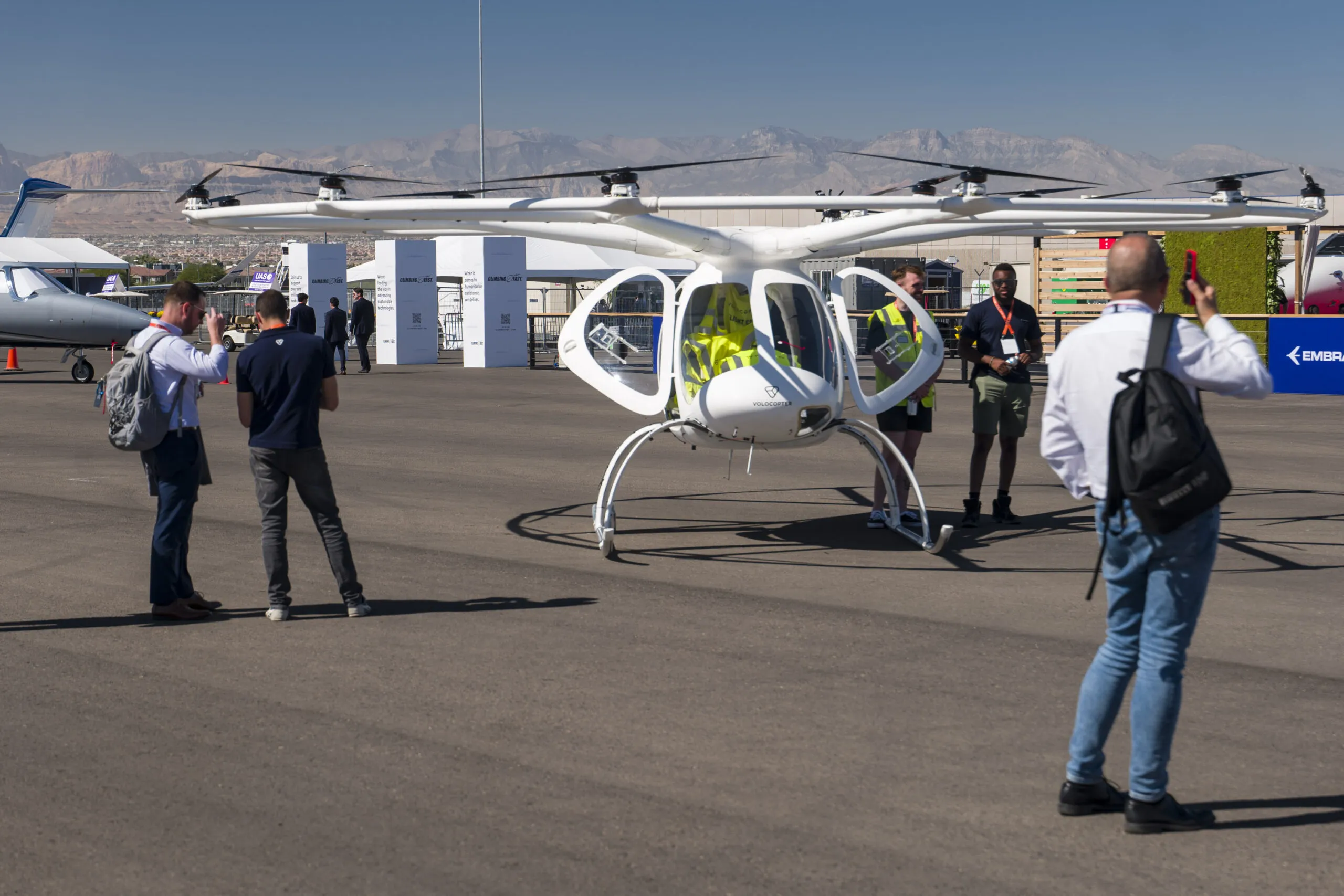 Volocopter. Photo by NBAA
Volocopter. Photo by NBAA
That said, challenges remain. AAM operations must demonstrate the ability to safely interact with other aircraft. Infrastructure is another key focus area for the industry, including concerns about whether already-stressed regional power grids will be able to support large-scale AAM operations.
Dan Elwell, an advisory board member for Joby, pointed to legislation like SB 100 in California, which is intended to scale up renewable energy production to offset the gap. “I don’t view infrastructure as a big hurdle for us,” he added. “There are thousands of heliports around the U.S., and we’re also going to be able to use large parking lots. We should be able to get back to rooftop operations as long as we have a charging capability.”

Photo by NBAA
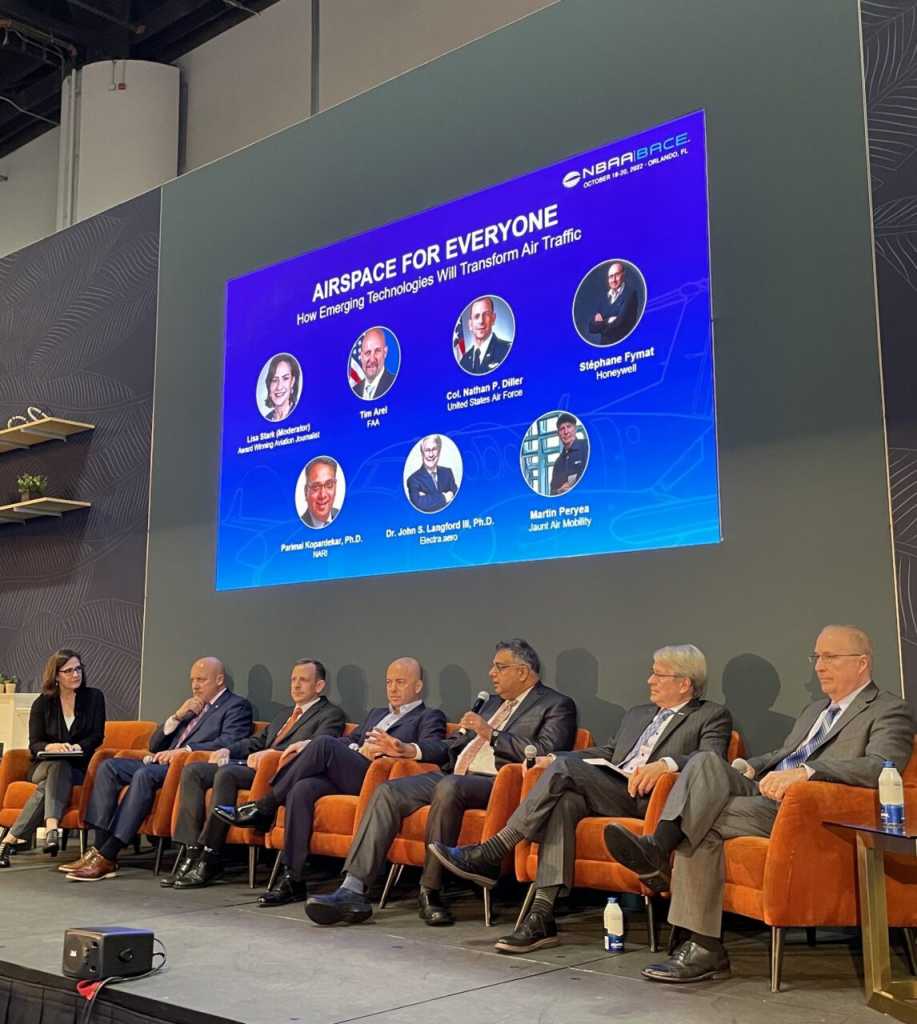
Many industry stakeholders aim to begin small-scale commercial AAM operations by 2025, and Volocopter hopes to fly even sooner, during the 2024 Paris Summer Olympics.
To make that happen, FAA Air Traffic Organization COO Tim Arel noted that AAM must not only safely operate among other aircraft, but also such new entities as commercial space providers.
“Our approach is [to provide] equitable access to the airspace. As all that comes together, our concern is how everyone will play together,” he said. “So, getting to scale is going to be our biggest challenge in our airspace.”
Arel pointed to the agency’s “Innovate28” initiative as a practical roadmap toward that goal.
“There are a lot of incremental tests and coordination efforts that we’re going to do around the country, all aimed toward a fully integrated system of all players in the LA basin by [the Los Angeles Summer Olympics in] 2028,” he said.




